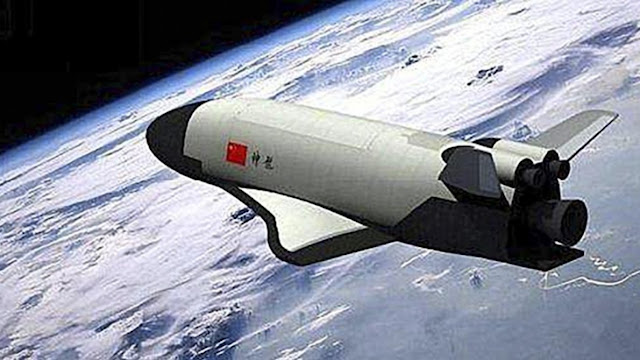ISS - Expedition 68 Mission patch.
November 5, 2022
New science experiments to benefit humans on and off the Earth are packed inside a rocket and ready to blast off this weekend from Virginia to the International Space Station. The Expedition 68 crew is preparing for the arrival of the precious space cargo while also gearing up for a series of spacewalks set to begin this month.
Northrop Grumman’s Antares rocket stands at NASA’s Wallops Flight Facility’s launch pad in Virginia. Attached to the top of the U.S. rocket is the company’s Cygnus space freighter loaded with about four tons of research gear, crew supplies, station hardware. Antares will lift off at 5:50 a.m. EST on Sunday sending Cygnus on a two-day delivery trip to the orbiting lab. NASA TV, on the agency’s website and app, will begin live launch coverage at 5:30 a.m.
Antares carrying Cygnus liftoff. Animation Credit: NASA
Flight Engineers Nicole Mann and Josh Cassada spent Friday reviewing procedures and practicing techniques on a computer to capture Cygnus with the Canadarm2 robotic arm when it arrives next week. Cygnus will perform automated approach and rendezvous maneuvers until it reaches a point about 30 feet (10 meters) from the station early Tuesday. Mann will then command the Canadarm2 to extend toward Cygnus and capture it at 5:50 a.m. on Tuesday while Cassada backs her up monitoring the vehicle’s data. Controllers on the ground will then relieve the duo and remotely guide the Canadarm2 with Cygnus in its grips to the Unity module where it will be installed for 11 weeks of cargo activities.
Spacewalks are also on the schedule this month for two astronauts and two cosmonauts. Cassada and NASA Flight Engineer Frank Rubio are preparing for a Nov. 15 spacewalk to ready the orbiting lab for its third and fourth rollout solar arrays. Mission controllers on Monday will talk on NASA TV about that spacewalk and two more excursions to finish the solar array installation work before the end of the year. Rubio and astronaut Koichi Wakata of the Japan Aerospace Exploration Agency (JAXA) cleaned spacesuit cooling loops, checked the functionality of suit components, and organized the Quest airlock where the two spacewalkers will exit the station. Mann and Cassada were also on hand on Friday assisting with the spacesuit work.
Image above: Astronaut Koichi Wakata works on spacesuits, also known as Extra-vehicular Mobility Units (EMUs), located in the space station’s Quest airlock. Image Credit: NASA.
Commander Sergey Prokopyev and Flight Engineer Dmitri Petelin have also been preparing for a different set of spacewalks to install a radiator and airlock on the Nauka science module. The cosmonauts have been getting their Orlan spacesuits ready, gathering spacewalk tools, and cleaning the Poisk module’s airlock ahead of the planned spacewalks. Prokopyev is the veteran of two previous spacewalks from 2018 while Petelin is preparing for his first.
Cosmonaut Anna Kikina started Friday downloading biomedical data to scientists on Earth for analysis. Afterward, she spent the rest of the day servicing the Zvezda service module’s oxygen generator and cleaning vents inside Nauka.
Related links:
NASA TV: https://www.nasa.gov/multimedia/nasatv/index.html
Expedition 68: https://www.nasa.gov/mission_pages/station/expeditions/expedition68/index.html
Canadarm2 robotic arm: https://www.nasa.gov/mission_pages/station/structure/elements/mobile-servicing-system.html
Unity module: https://www.nasa.gov/mission_pages/station/structure/elements/unity
Quest airlock: https://www.nasa.gov/mission_pages/station/structure/elements/joint-quest-airlock
Poisk module: https://www.nasa.gov/mission_pages/station/structure/elements/poisk-mini-research-module-2
Zvezda service module: https://www.nasa.gov/mission_pages/station/structure/elements/zvezda-service-module.html
Nauka multipurpose laboratory module: https://www.roscosmos.ru/tag/nauka/
Space Station Research and Technology: https://www.nasa.gov/mission_pages/station/research/overview.html
International Space Station (ISS): https://www.nasa.gov/mission_pages/station/main/index.html
Image (mentioned), Animation (mentioned), Text, Credits: NASA/Mark Garcia.
Best regards, Orbiter.ch













































